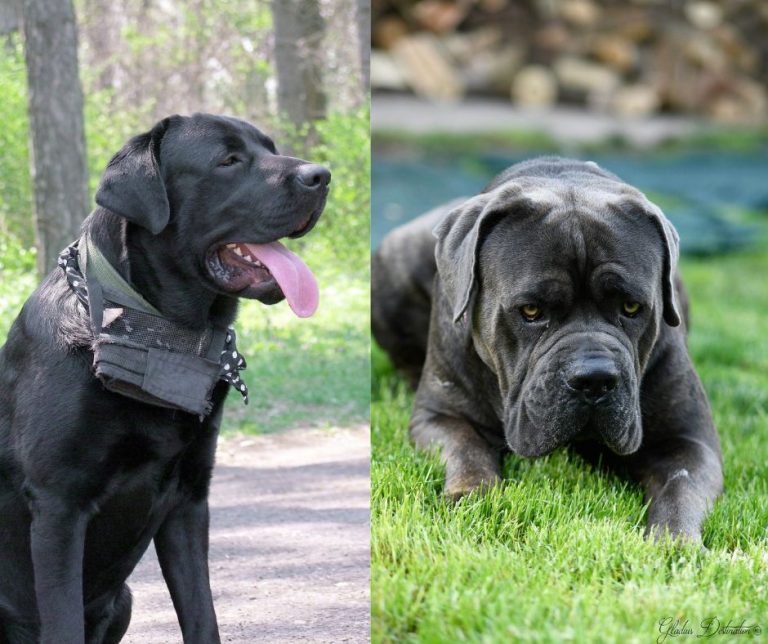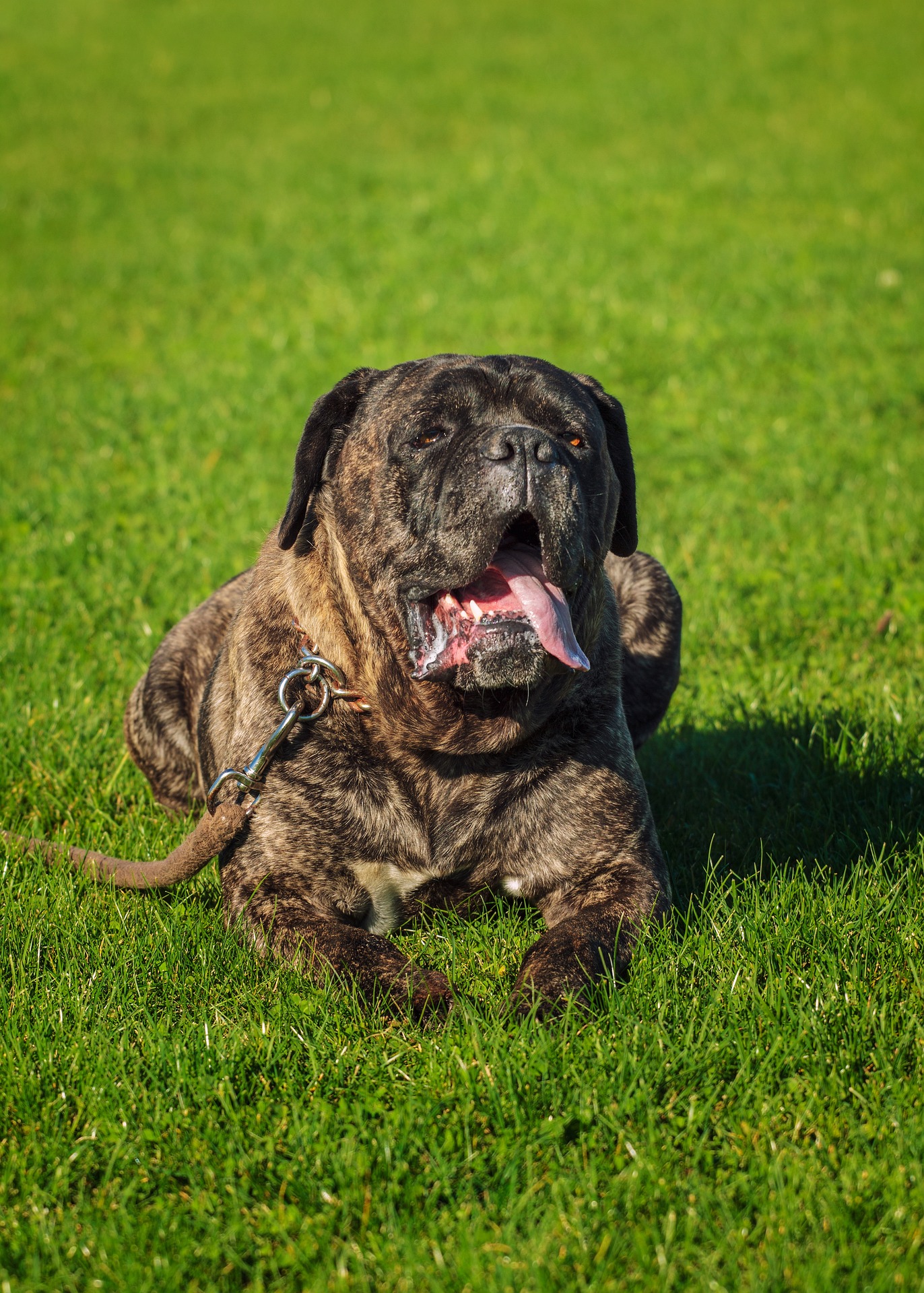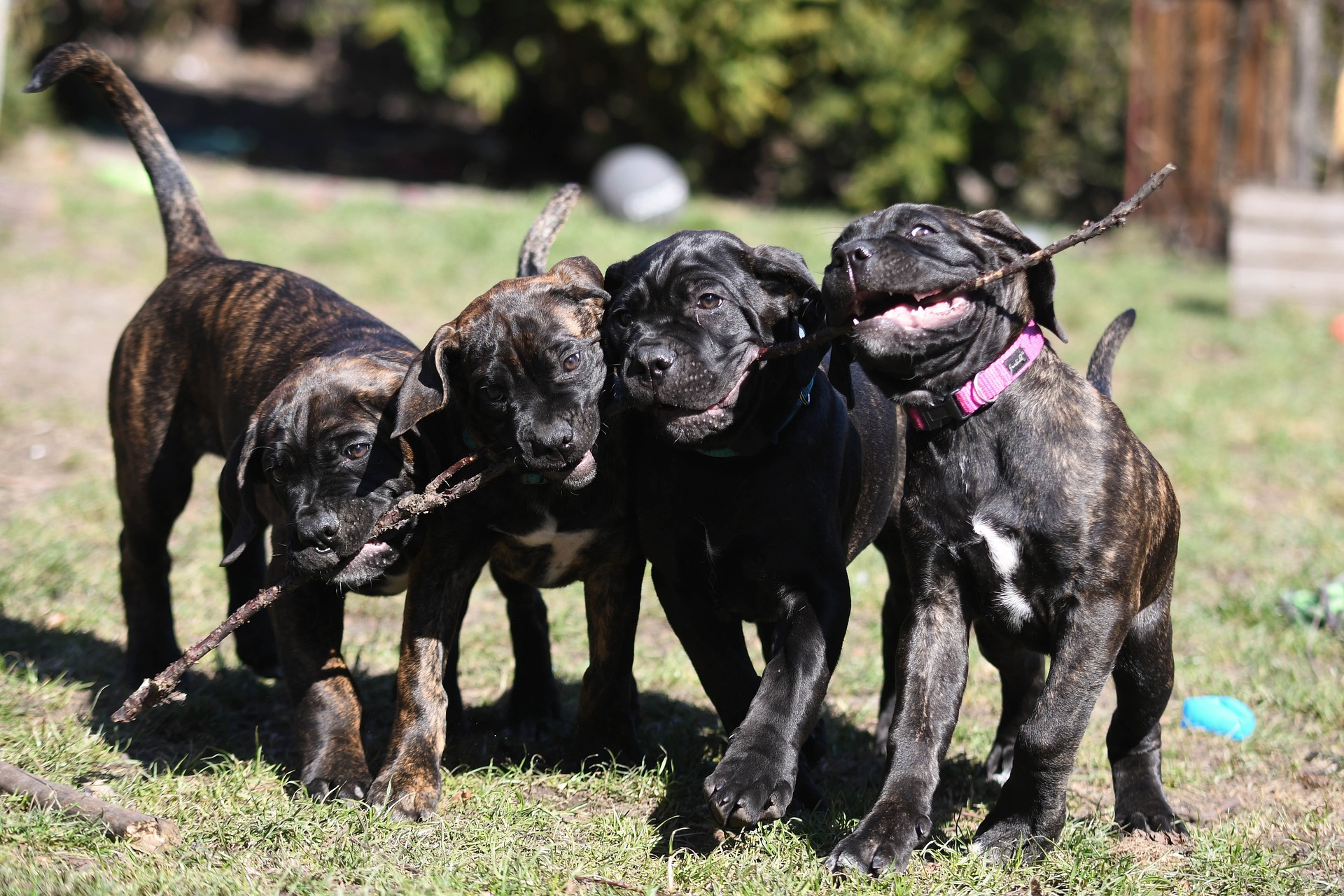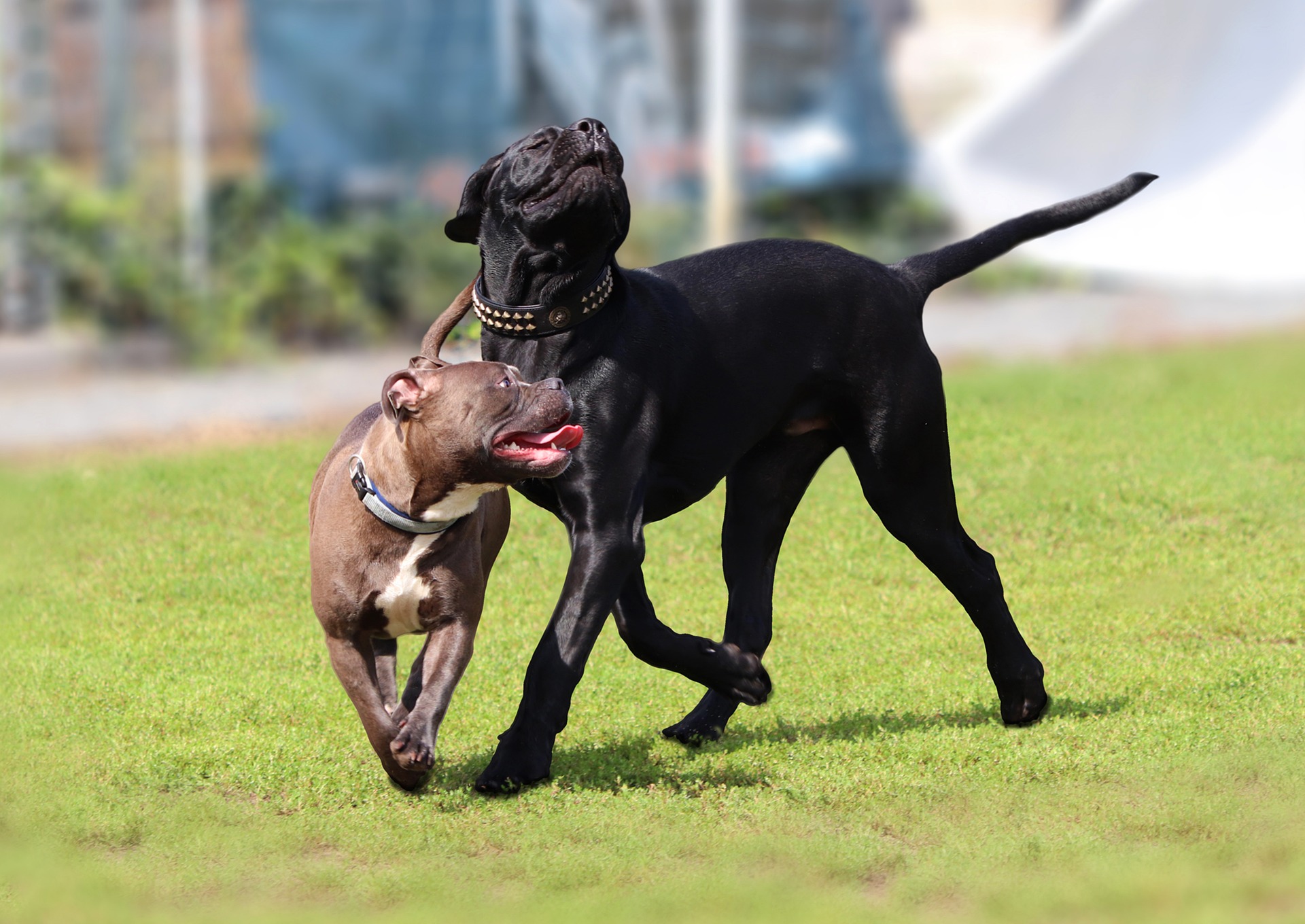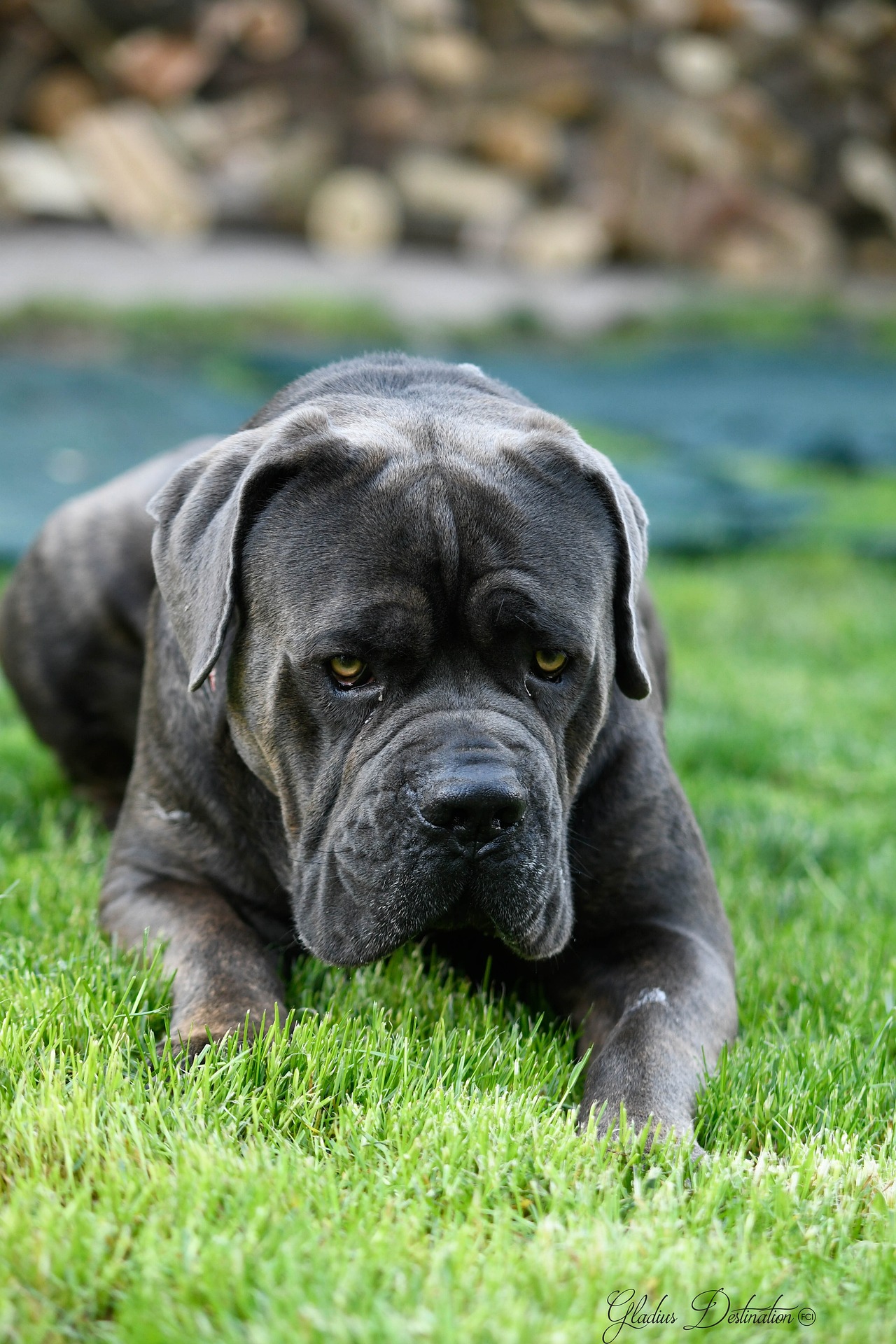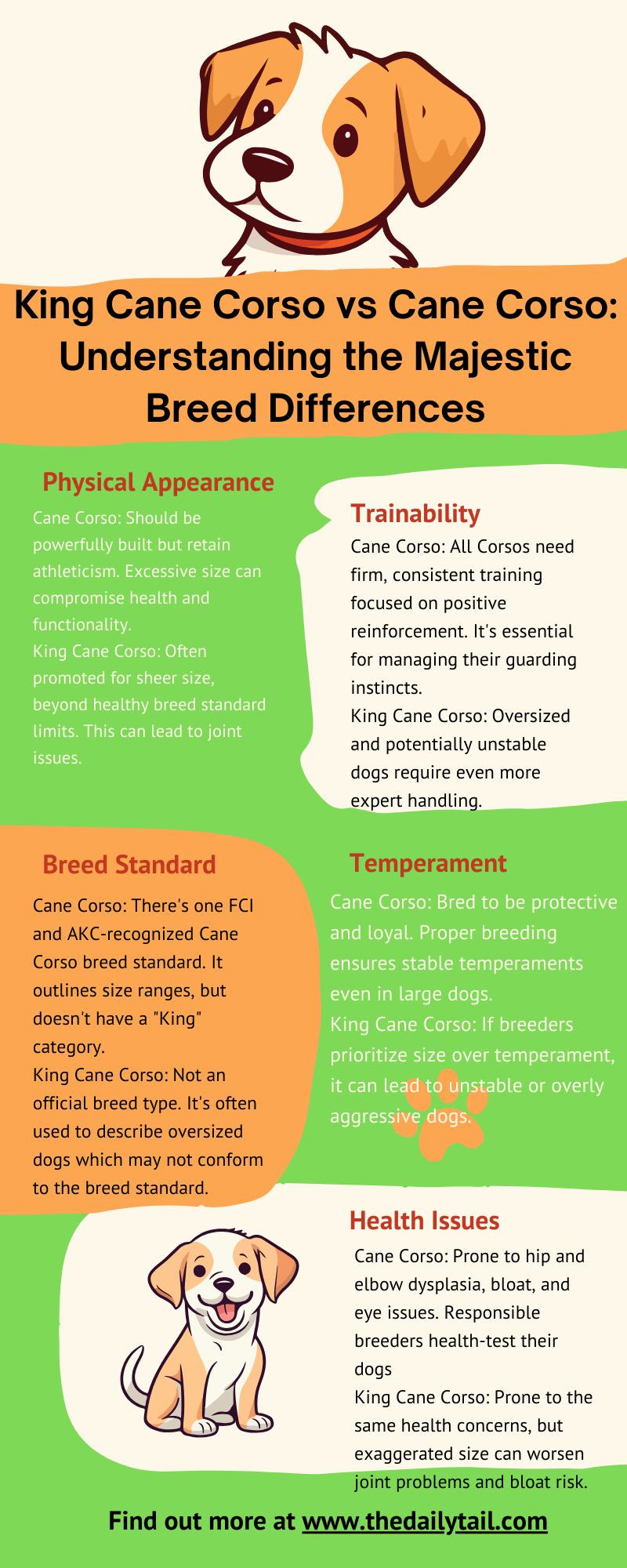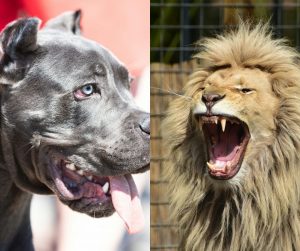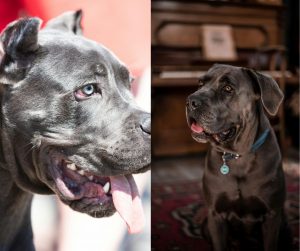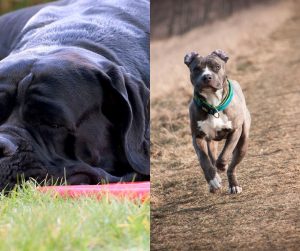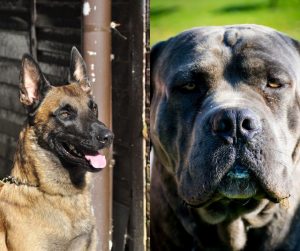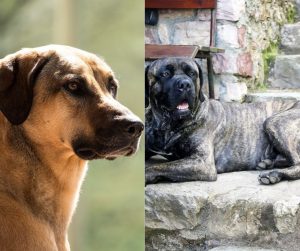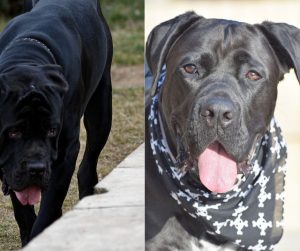As someone passionate about the Cane Corso breed, I find the term ‘King Cane Corso’ misleading. Let’s unravel the truth and why it matters for responsible ownership.
In the world of large breed dogs, the Cane Corso is a name that commands respect. Known for their historical role as guardians and protectors in Italy, these dogs are the epitome of strength and confidence. However, within the breed, there is a distinction that piques the curiosity of many enthusiasts: the King Cane Corso.
This variant takes the breed’s already impressive size to even greater heights, setting it apart from the standard Cane Corso. Today, we will take a deep look into the King Cane Corso vs Cane Corso breed comparison.
While both dogs share a common lineage, the King Cane Corso is specifically bred for those seeking an even more imposing presence. These gentle giants tower above their traditional counterparts, commanding attention with their size and powerful build. Understanding the differences between the standard and the King Cane Corso offers insight into their unique traits, needs, and the best fit for potential owners.
Key Takeaways
- Size and breeding goals distinguish the King Cane Corso from the standard Cane Corso
- King Cane Corso’s imposing stature requires consideration of space, nutrition, and general care
- Choosing between the King and traditional Cane Corso depends on the prospective owner’s lifestyle and preferences
History and Origins
When diving into the history of the majestic King Cane Corso and the Cane Corso dog breeds, one discovers a tapestry of breeds deeply rooted in Italian history, evolving from ancient war dogs to the affectionate companions that grace families today.
Italian Mastiff Lineage
The Cane Corso’s lineage begins in Italy, with their ancestors being the ‘Molossus’, a breed that belonged to an ancient Greek tribe known for their powerful war dogs. These dogs were highly regarded by the Romans and were integral to the Roman Empire, serving as dogs of war who marched alongside legions. Through careful selection and breeding, the Molossus eventually gave rise to various mastiff breeds, with the Italian Mastiff — or the Cane Corso — differentiating as a distinct breed valued for its versatility and strength.
This is why many people call him also the Italian Mastiff, Neapolitan Mastiff, or Italian Cane Corso.
- Early Roles: War dogs, hunters, guardians
- Region Originated: Italy
- Ancestral Breed: Molossus
From War Dog to Companion
These dogs transitioned from fierce combatants in Roman arenas and battlefields to protectors and helpers in rural Italian life. After the fall of the Roman Empire, their role shifted largely toward farm work, where they served as capable guardians of property, livestock, and were even seen rounding up pigs and cattle. Over the centuries, they’ve emerged as dependable companions, adapting from their militaristic roots to become loving and loyal family members.
- Transition: From Roman warriors to farm guardians
- Contemporary Role: Family protectors and companions
- Characteristics: Loyal, protective, intelligent
Through a nuanced understanding of their origins and history, the bond between these dogs and their owners is not just of loyalty but is steeped in a rich past that they carry within them — a past that speaks of valor, duty, and unwavering companionship.
Characteristics of the King Cane Corso
When it comes to the King Cane Corso dogs, their majestic presence is hard to miss. They’re a spin on the traditional Cane Corso with an emphasis on certain physical traits that set them apart.
Size and Appearance
The King Cane Corso dog breed makes an immediate impression with its size. A bit of a gentle giant, one might say. They commonly boast a large frame, with males standing proudly nearly at 28 inches at the shoulder. Their weight is notable too, often tipping the scales at over 100 pounds. The breed’s appearance is characterized by a large head and muscular build, reminiscent of their mastiff heritage, yet they carry themselves with an agility that belies their size.
Coat Color Variations
The coat of the King Cane Corso is short, stiff, and often described as coarse to the touch. When it comes to colors, they don a palette that includes black, gray, fawn, and red. Like the traditional Cane Corso, they can exhibit brindle patterns in all these colors, which may be paired with a black or gray mask. It’s not uncommon to spot a King Cane Corso with small patches of white, adding unique touches to their already distinguished look. The coat is a key component of the breed standard, and while they may share the same color spectrum as the standard Cane Corso, enthusiasts look for these nuances to identify a true King Cane Corso.
General Care
Caring for a King Cane Corso, much like its relatives, involves a commitment to regular exercise and grooming. They’re both powerful dogs that thrive with attention to their physical and mental well-being.
Exercise Requirements
Exercise is not just a luxury; it’s a necessity for these large and active dogs. They need:
- Daily exercise: At least 1 to 2 hours a day
- Activities: Include walks, runs, and playtime to help them burn off energy
Remember, a well-exercised dog is a happy and healthy dog. Keeping up with their exercise needs also helps in maintaining their muscle tone and preventing obesity, a common issue in large breeds.
Grooming and Shedding
Grooming keeps them looking their best and is essential for their overall health. Here’s a straightforward approach:
- Brushing: A few times a week to remove loose fur and distribute skin oils
- Bathing: Only as needed, since overbathing can strip their coat of natural oils
Despite their short hair, both breeds shed regularly. Investing in a good vacuum and establishing a regular grooming routine can help manage their shedding. Remember, grooming is not only about appearances, it’s about keeping their skin and coat healthy – plus, it’s a great time to bond with your pooch!
Health and Lifespan
When discussing the King Cane Corso and the Cane Corso, it’s important to be aware of their health and lifespan. Both breeds share similar concerns, and knowing these can help ensure your canine companion stays as healthy as possible for as long as possible.
Common Health Issues
The King Cane Corso and Cane Corso are prone to some overlapping health issues due to their large size and breed characteristics. Here’s a brief look at some common health concerns:
- Hip Dysplasia: A genetic condition often found in larger breeds where the thighbone doesn’t fit snugly into the hip joint
- Gastric Torsion (Bloat): A life-threatening situation that can affect large dogs with deep chests; it requires immediate veterinary attention
Both breeds may also encounter:
- Progressive Retinal Atrophy, an eye condition that can lead to blindness
- Other health problems such as heart conditions, which should be monitored by a vet
Maximizing Longevity
A Cane Corso’s lifespan typically ranges from 10-12 years. To give these dogs the longest, happiest life they can lead, owners should focus on:
- Proper Diet: A well-balanced diet suitable for large, active breeds
- Regular Exercise: Keeping them fit and at a healthy weight to reduce stress on their joints
- Routine Vet Visits: Regular check-ups can catch and address health issues early on
- Preventative Measures: Like any breed, they benefit from early health screenings and proper vaccinations
By understanding and addressing these health concerns, owners can play a vital role in maximizing the longevity of their beloved pets.
Behavior and Temperament
Understanding the behavior and temperament of both King Cane Corsos and regular Cane Corsos is crucial for prospective owners to ensure a good fit with their family and lifestyle.
Personality
Cane Corsos are known for their distinctive personalities. They are bold, confident, and have a protective nature, making them excellent watchdogs. They tend to possess a calm demeanor, especially as adults, which is appreciated in a family setting. While King Cane Corsos share these personality traits, they can exhibit an even more assertive presence due to their larger size. However, it’s essential to remember that an individual dog’s personality can vary, and their environment and upbringing play significant roles.
Socialization Needs
Proper socialization is key for these powerful canines. Starting from a young age, Cane Corsos should be introduced to various people, environments, and other animals to ensure they grow up to be well-rounded and socially adept. King Cane Corsos, given their imposing size, might require additional focus on socialization to ensure they can distinguish between normal interactions and genuine threats. When socialized correctly, Cane Corsos can be affectionate with family, gentle around children they know, and reserved around strangers without being overtly aggressive.
Training Tips
When training King Cane Corsos or Cane Corsos, the key is to begin with consistent obedience training and account for their potential stubbornness. Both breeds are intelligent and capable, but they require thorough mental stimulation and a patient trainer.
Obedience and Agility
Obedience training should start early, as it lays the foundation for a well-behaved dog. They often excel in agility, which not only provides physical exercise but also crucial mental stimulation. Utilize positive reinforcement techniques such as:
- Rewards: Treats can be a great motivator for them
- Praise: Verbal affirmation lets them know when they’ve done well
- Clicker Training: This method can help mark desirable behavior efficiently
For agility training, keep these tips in mind:
- Start with basic commands like ‘sit’, ‘stay’, and ‘come’
- Introduce them to agility equipment gradually, ensuring they are comfortable at each stage
Coping with Stubbornness
Cane Corsos can be stubborn, requiring an assertive yet sympathetic approach. They respond well to:
- Consistency: Stick to the rules you’ve set
- Patience: Dog training may take time, so patience is paramount
- Leadership: They need to see their trainer as a leader; this helps manage their assertive nature
To keep them engaged and manage their stubborn streak, consider these strategies:
- Short, diverse training sessions to prevent boredom
- Mix obedience work with fun activities to maintain their interest
Choosing a Breeder or Adoption
When one decides to welcome a King Cane Corso or a Cane Corso into their home, the choice between selecting a reputable breeder or opting for rescue and adoption is crucial. It’s about finding a healthy dog that fits into the family while also considering the well-being of the animal.
Reputable Breeders
Reputable breeders are dedicated to the health and temperament of the Cane Corso breed. They invest time in selecting the right dogs to produce well-adjusted and physically sound puppies. Here are some specifics to consider when looking for a breeder:
- Health Clearances: They should provide health clearances for both parent dogs, ensuring they are free from common genetic conditions
- Knowledgeable: A good breeder is knowledgeable about the Cane Corso breed, including the distinct characteristics of the King Cane Corso variation
- Visitation: They often allow potential owners to visit and meet the puppies’ parents and siblings
Rescue and Adoption Options
Adopting a Cane Corso can be a rewarding experience, as it offers a second chance to a dog in need. Rescue groups and animal shelters are good starting points for finding a Cane Corso to adopt. Factors to keep in mind include:
- Background Information: Shelters and rescues can usually provide some background on the dog’s history and temperament
- Support: Many provide post-adoption support, including training resources and advice to help with the dog’s transition into a new home
- Costs: Adoption fees are generally lower than purchasing from a breeder and often include initial veterinary care
Comparison with Traditional Cane Corso
In the canine world, the King Cane Corso stands out as a considerable variant of the traditional Cane Corso—their differences begin with size but extend into temperament, making each suited to different owners’ needs.
Physical Differences
King Cane Corso:
- Height: Up to 30 inches or even more
- Weight: Often exceeds 150 pounds
- Build: Distinctly bulkier with a more powerful stature
Traditional Cane Corso:
- Height: Males 25 to 27.5 inches, Females 23.5 to 26 inches
- Weight: Proportionate to height, typically less than King variant
- Build: Large and muscular, yet less so than the King
The King Cane Corso is like the traditional Cane Corso’s more colossal cousin, bred for sheer size and a commanding presence. This mastiff breed variant overshadows its counterpart with height and weight that tip the scales of the average breed standard.
Temperament and Behavior Comparison
The temperament of a dog is just as important as its physique, especially for breeds serving as guard dogs.
King Cane Corso:
- Domineering presence that pairs well with assertive and experienced handlers
- Protective instincts dialed up, given their size and breeding focus
Traditional Cane Corso:
- Confident and intelligent, with a natural inclination for guardianship
- While protective, their temperaments are less intense than the King variant
Both share the innate guard dog qualities of the mastiff breed but differ in intensity. The King Cane Corso might appear more formidable, while the traditional Cane Corso balances guardianship with a touch more adaptability to family life. They are both a testament to the breed’s versatility in character: one leaning towards a more robust guard role, the other more adaptable but no less vigilant.
Conclusion
When looking between the King Cane Corso and the standard Cane Corso, families often wonder which might suit their homes better. It’s important to acknowledge that both types share a strong sense of loyalty and potential as great companions.
The King Cane Corso, with its larger stature, may be more imposing, but that doesn’t strip the Cane Corso of its own considerable presence and power. They both hail from Italy and, despite size differences, they hold a reputation for strength. If you like a guard dog, not many can compare to the Cane Corso. Other options might look into Presa Canario and Mastiff, but the Cane Corso is one of a kind.
Prospective owners should consider the following:
- Space: Larger homes are better for King Cane Corsos due to their size
- Exercise: Both breeds require regular exercise to maintain health and happiness
- Health Issues: Be aware of common ailments such as hip dysplasia and gastric torsion which can affect either breed
Socialization is key, too. Introducing either breed to various people and situations early on will promote a well-adjusted demeanor. When considering these breeds for your family, reflect on your ability to meet their physical and emotional needs.
Lastly, while both breeds can be impressive guardians, it’s their capability for companionship that wins the hearts of owners. They stand by their family with unwavering commitment. If you’re open to advice, remember that patience and positive reinforcement go a long way in nurturing a trusting bond.
When armed with the right information and resources, choosing between a King Cane Corso or a Cane Corso becomes less daunting. What’s imperative is the fit with your lifestyle and the mutual happiness between you and your four-legged companion.

